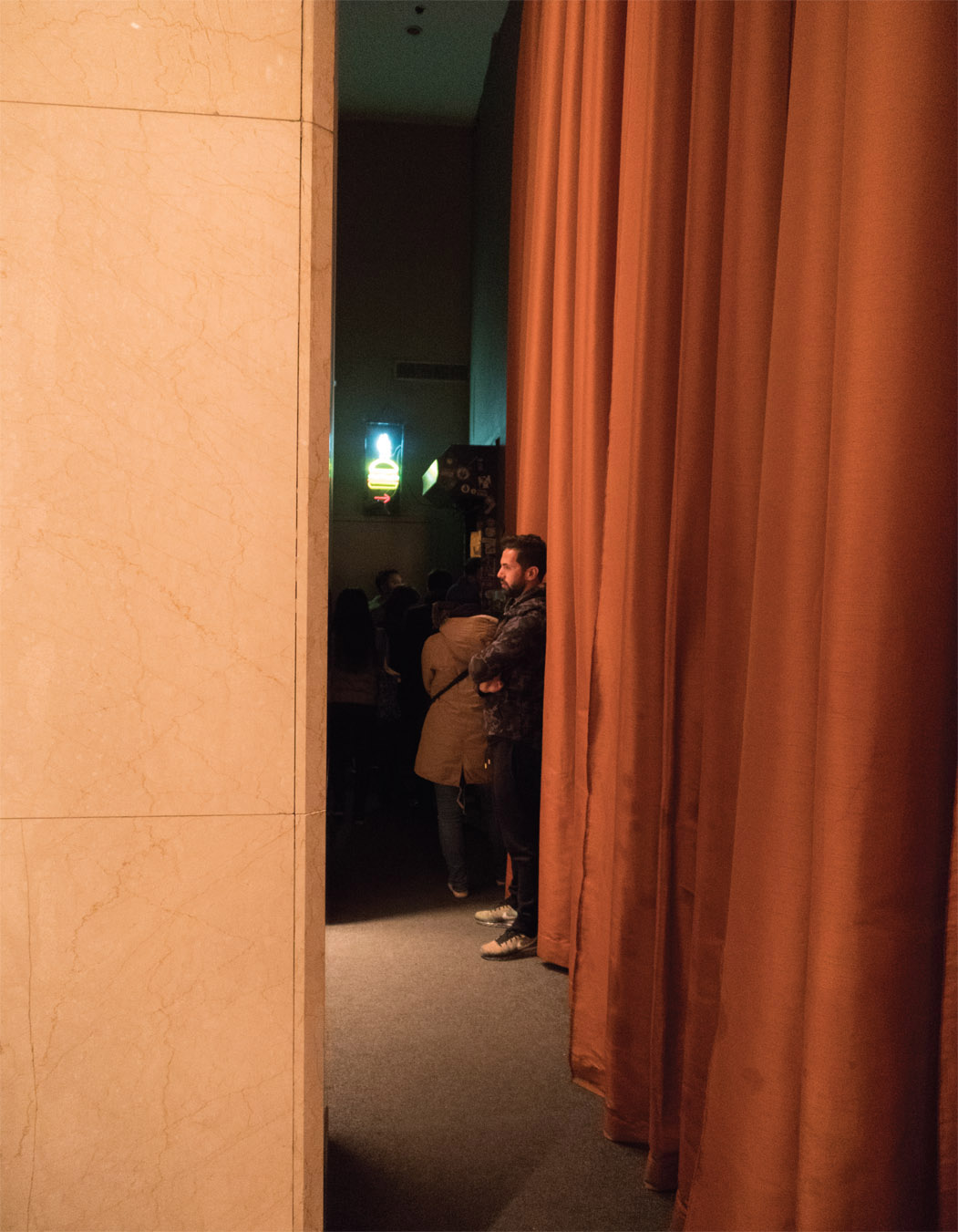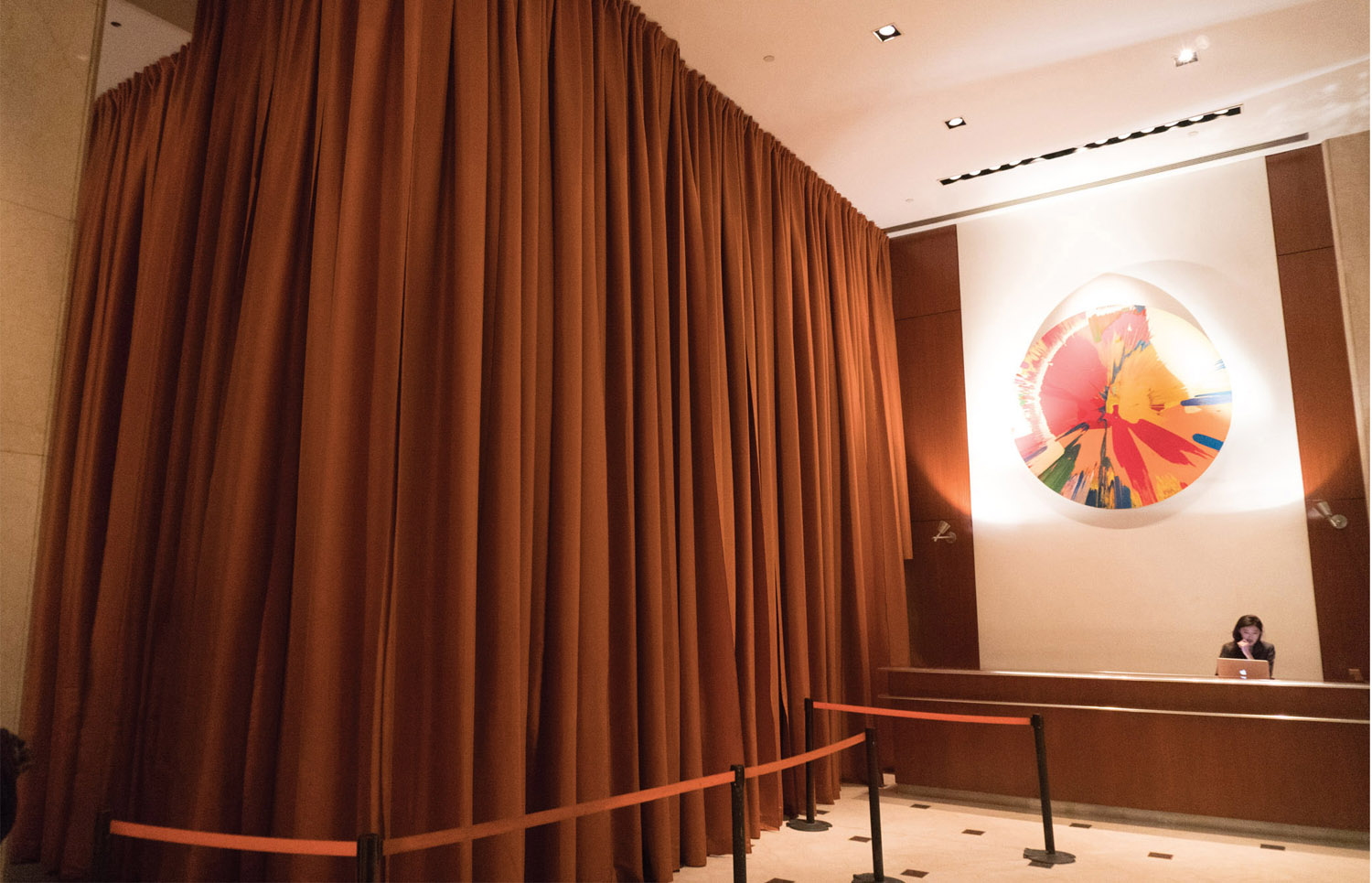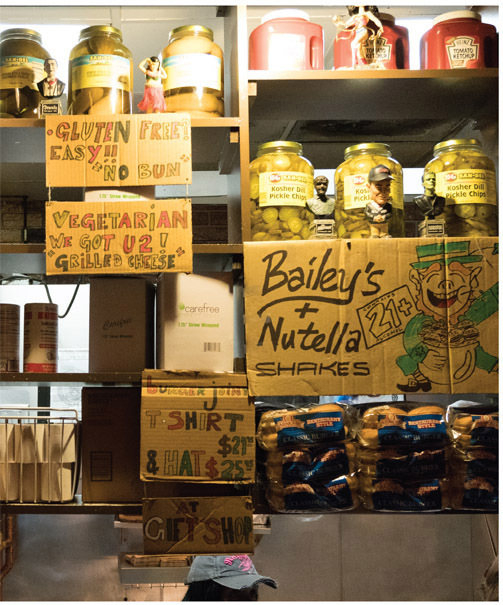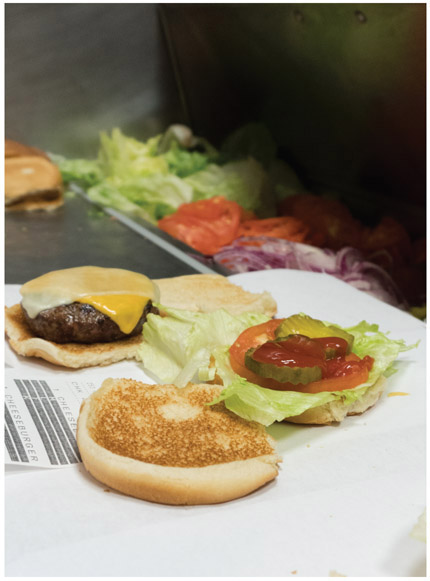

In a city that over-intellectualizes everything from fine wine to pizza, the classic all-American burger is now in New Yorkers’ cross-hairs. But the overall consensus is the burger joint gets it spectacularly right, with a twist; classic eats hidden in plain sight.
To find to the burger joint (yes, lowercase), one must first traipse through the five star Le Parker Meridien hotel lobby—an expansive contemporary space; a bit “intimidating” but certainly not out of place for Midtown Manhattan. To the uninitiated, this might seem like a fool’s journey for burgers, but with a little patience they can be found.
Concierges and bellhops will wait a moment before helping people looking for burger joint, but will give a bemused smile which seemingly says, “Yes, you’re on the right track.”
Off to the Northwest side of the lobby is an enormous, floor-to-ceiling curtain. Peek around the corner—and a wordless neon burger sign beacons that this is the spot.
Then almost like stepping onto a movie set, one’s world is transformed immediately from swanky big city hotel, to a small town eatery. Some say the vibe reminds them of a local college hangout. Wood tables and booths are first come first serve. Wall paneling is dressed with graffiti and posters. The velvet curtain has done its second duty well: masking the smells of grilling burgers that are now enveloping one’s nose.
The burger joint is the brainchild of restauranteur Steven Pipes and Le Parker Meridien’s executive chef Emile Castillo.
Started back “On a lark,” according to Stephen in 2002, it has proven to be not just a gimmick. The place has serious food credentials. Several foodie outlets put its burgers in the top five for the city. Proof alone is the healthy mix of tourists and businesspeople there during lunch hour. The line often snakes outside the curtain (sometimes ruining the treasure hunt).

The menu is short. Burgers can be ordered single or double. Along with a side of extra crispy fries or a pickle.
Pitchers of beer and shakes help wash down the meal and there are brownies that deserve their own “joint.”

As for the burgers, Pipes and Castillo settled on one burger recipe after dozens of testings and tastings. They discovered that reinventing the wheel was not necessary. The burgers are simple are a cut above.
Five-ounce patties are ground fresh in-house using top quality meat. Meat is put once through a “hand grinder giving it a course grind.” Castillo says, “The meat is touched little as possible because it hardens the burger.”
As for any special sauce or spices: look elsewhere; not even salt is added. Castillo says it, “covers up the quality of the meat and can dry it out.”
Burgers are cooked and assembled on demand: rare, medium, or well on a toasted bun. “A gas grill is used so a burger is not allowed to cook in its own fat. Rather the fat falls through onto the briquette, and that adds flavor to the burger.” It is as close to a backyard barbecue taste anyone is going to get in the middle of Manhattan.
Burgers are dressed with classic add-ons like ketchup, Dijon mustard, mayonnaise, lettuce, tomatoes, pickles, onions, or the catch-all, “The Works.”
Of course there is a hardy offering of cheese, if so desired, Castillo settled on white cheddar and Colby for the best blend in terms of melting and taste.
All of this burger magic is done right before your eyes in a tiny kitchen behind the counter. Logistics demand speed and synchronicity as orders loom from the ever growing lunch hour crowd.
The close quarters has had at least one positive consequence—two of the kitchen staff met here and eventually married.
Success here has also spanned two other Burger Joint branches in the city with more conventional storefronts. Perhaps with less mystique but at least they lessen the load for the “worst secret in town”—Le Parker Meridien’s Burger Joint.
HAMBURGERS

Like many other “All-American” foods, the hamburger most likely came here by way of immigrants. It is largely thought the hamburgers derived from Hamburg steaks in Germany in the 19th Century. However they did not really become popular in America until they were served at the World’s Fair in Saint Louis, Missouri in 1904.
During World War I they were referred to as “Liberty sandwiches” to avoid the German reference. It is estimated Americans eat 50 billion burgers every year accounting for seventy-one percent of all the beef consumed at American eateries and sixty percent of all sandwiches.